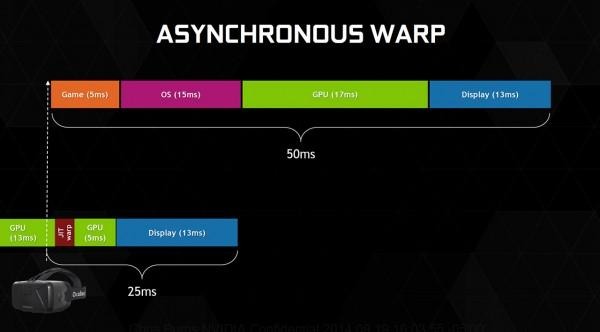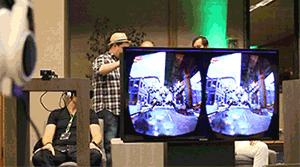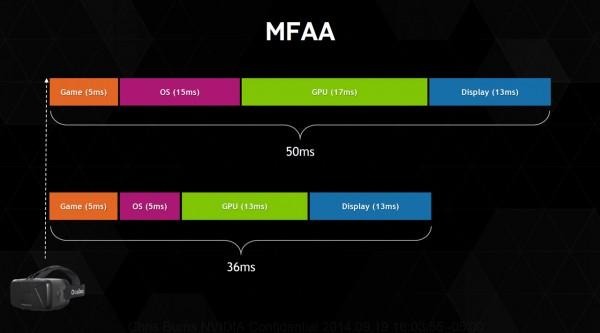NVIDIA's Asynchronous Warp Made Me Love Virtual Reality
Earlier today we released two articles about Virtual Reality with Oculus Rift, Unreal Engine 4, and most importantly, NVIDIA's VR Direct. What I want to do right now is to go over one very important element: Asynchronous Warp. That's the software feature that'll be changing how easy it is for the common user to see how awesome virtual reality can be today.
Latency cut in half
NVIDIA suggests that with the Maxwell generation of processors – one of which is the GTX 980 we're reviewing – "typical" latency times will be cut in half. This "halved" latency comes from a system called Asynchronous Warp.

Asynchronous Warp has the GPU update the last scene rendered based on the most recent head position information. This warps the graphics shown to fit the position of your head as closely as possible.
With Asynchronous Warp you're using a feature called JIT WARP. This is "Just-in-time compilation", also known as dynamic translation, WARP. WARP is Windows Advanced Rasterization Platform, a component of DirectX graphics in Windows, also a software rasterizer.
With this JIT WARP you're compiling during the execution of this move – while it's running – instead of immediately before.

So instead of waiting for the game or the OS to tell the GPU what to do, NVIDIA's software sees where your head is, what the graphics are in your line of sight beforehand, and sort of predicts what'll happen next, warping the graphics accordingly.
Asynchronous Warp starts working before any traditional system – any system out now – would even begin to process. The result is latency that's cut in half.
Other Latency Choppers
Above you'll also see basic Latency Optimization – that's the baseline optimization, and it comes before Asynchronous Warp and before MFAA. Below you'll see MFAA. Optimization with MFAA means working with 4X MXAA quality sampling but at half the cost.

MFAA uses many AA sample positions to create a high-quality picture without the performance hit you'd normally have with other anti-aliasing technologies on the market today.
VR Direct gives virtual reality a kick in the butt
When I experienced a demo called "Carflip" at an NVIDIA event earlier this month, it changed the way I perceive the viability of Virtual Reality for gaming and the possibilities therein. Reducing the amount of time it takes to get images from the computer to your headset is key in making Virtual Reality a viable system for games and other software in the future.
With what I've seen of VR Direct so far, NVIDIA will definitely be a key component in the fight to bring Virtual Reality to the masses.

